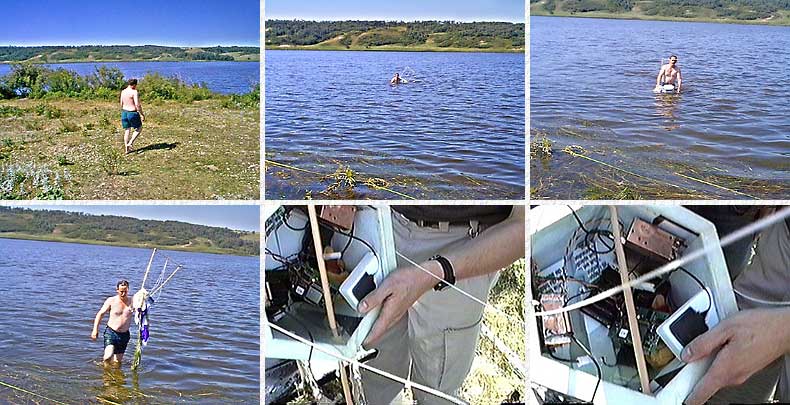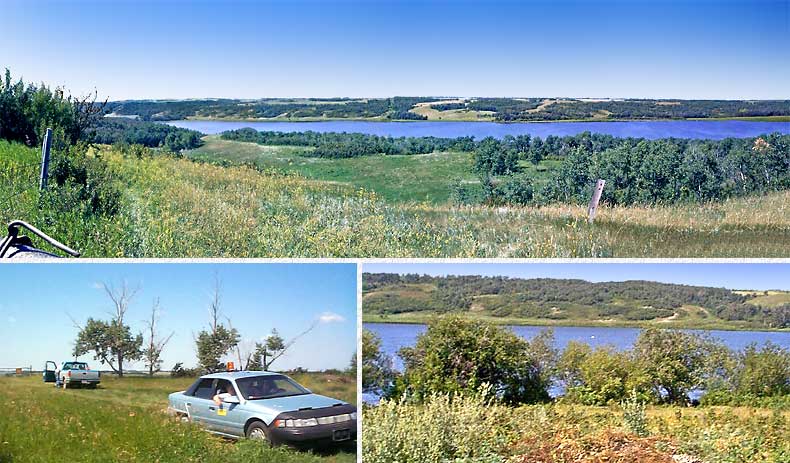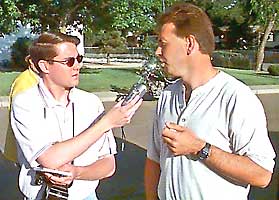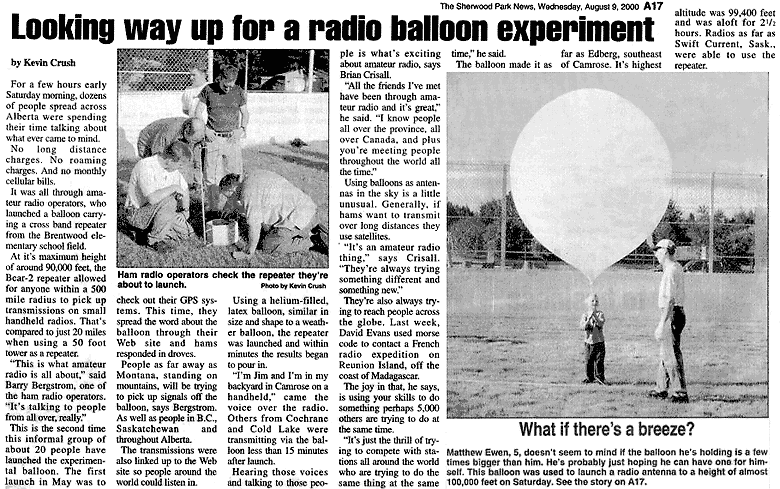BEAR-2 - August 5th, 2000BEAR-2 was launched at 8:48 AM MDT (14:48 UTC) from Sherwood Park, Alberta, BEAR-2 landed at 11:34 AM and was located in the middle of the Battle River at 11:45 AM, |
|
|
( X indicates burst point ) ( Star indicates landing point ) |
|
| BEAR-2 APRS Tracker | BEAR-2 Weight | BEAR-2 Video |
| Cross-Band Repeater | Digital Camera | Water Damage |
| The following links apply to both, BEAR-1 & BEAR-2, balloon flights. | |||||||
| Payload Capsule | Antennas | GPS Receiver | Parachute | Batteries | Telemetry | Operations | Members |
 The launch site was an outdoor skating rink that allowed a wind break to be easily built by placing 3 mil polyethylene on the screening at the upwind end of the rink. The plastic didn't even need to be attached as the breeze kept the plastic firmly held in place against the screening. While the balloon was filled, others were busy getting the payload ready and attaching the parachute.
Everything appeared fine on the workbench, but a problem with interference to the cross-band repeater was discovered at the last minute that we frantically tried to resolve. The interference turned out to be from the camera's micro-processor and the problem was just now discovered as the digital camera and repeater had never been operated together at the same time before. There was only one solution which was to unplug the digital camera! The camera was a last minute addition and it's picture quality was not that great anyway. The payload was then quickly taped closed as Matthew (son of James, VE6SRV) had the honour of holding down the filled balloon.
Brian, VE6BCA, and Garrett, VE6RKY, check that telemetry and all systems are operational before giving the final go ahead for launch. Matthew passed the largest helium balloon that he will likely see for a while on to the launch crew that gently released BEAR 2 on it's way to near space.
|
|
 |
Thousands of square miles of dry land and where does BEAR 2 decide to land, but in the middle of one of the widest portions of the Battle River, but why did it have to be the Battle River. Water in any other river wouldn't have done much, if any, damage to the payload electronics other than cause the equipment to stop working
while wet. But the Battle River water is VERY alkaline and loaded with minerals that makes a real mess of powered electronic circuits. (left) BEAR payload can be seen as 2 white dots (capsule + parachute), |
 An amateur in the area was contacted on 2 meters and was on his way with a boat. But an hour after 'splash down', when the telemetry radio quit transmitting that should have functioned for several days, James figured that the payload may be taking on water and that he had better swim out and rescue the payload before it sank. This was no small task as it was nearly a quarter mile swim to the package. |
|
| To BEAR Home Page |






